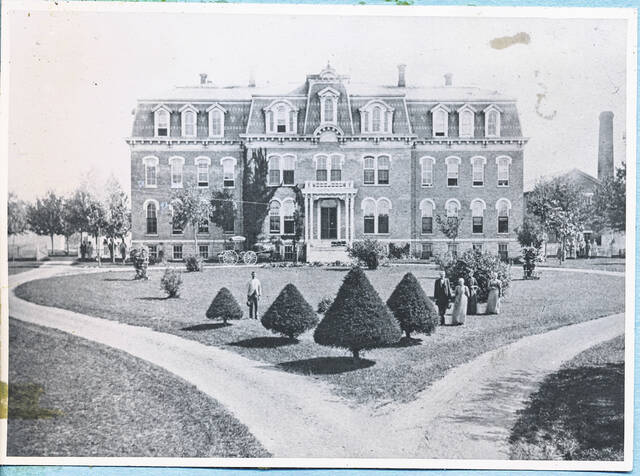
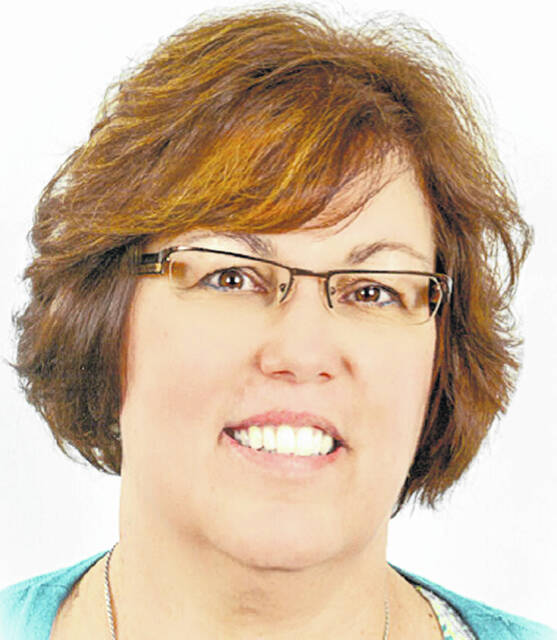
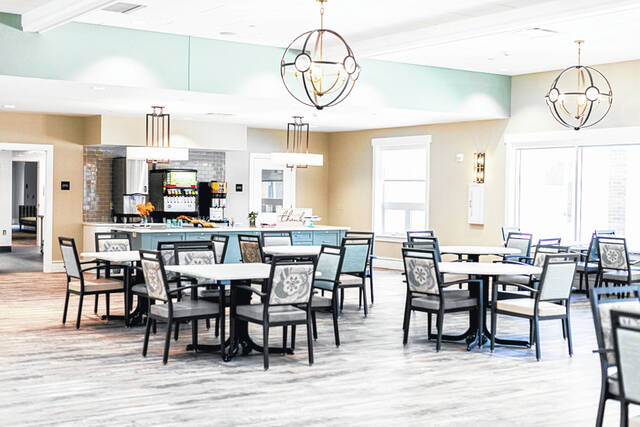
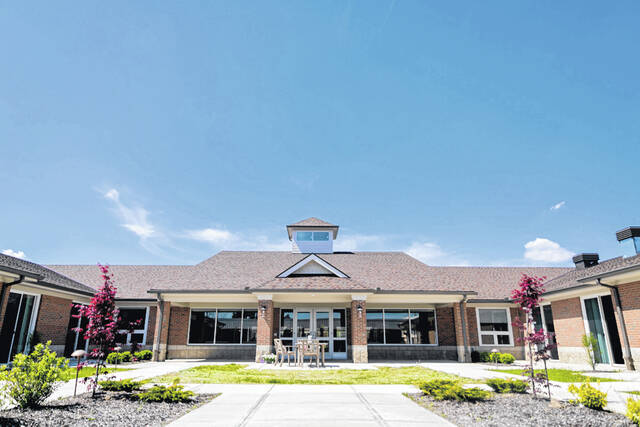
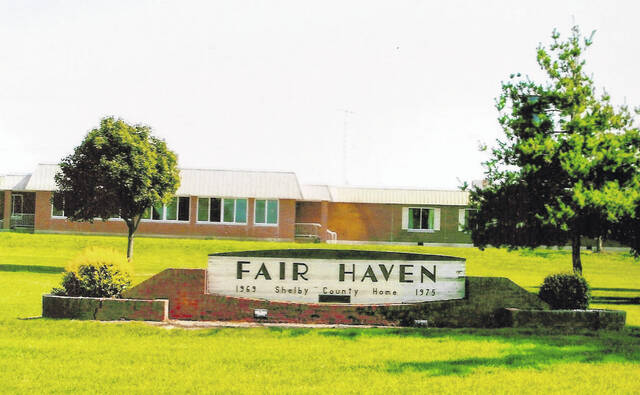
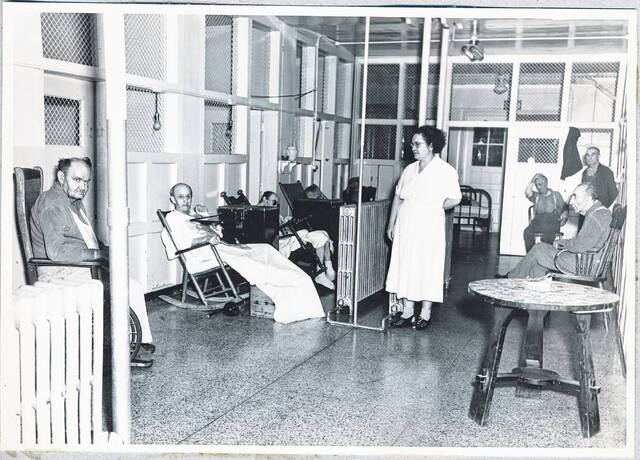
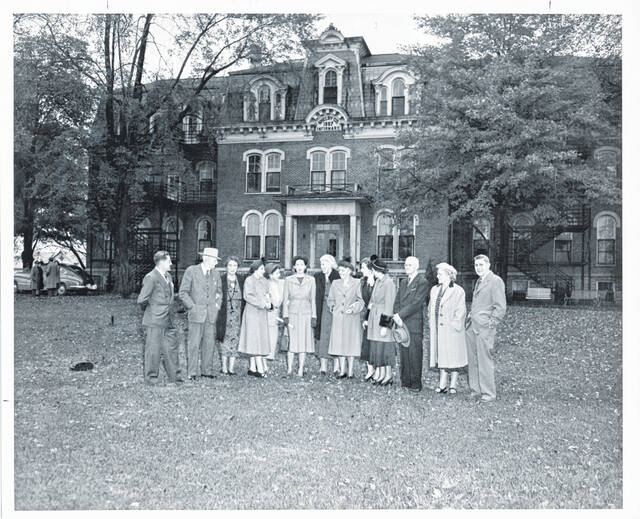
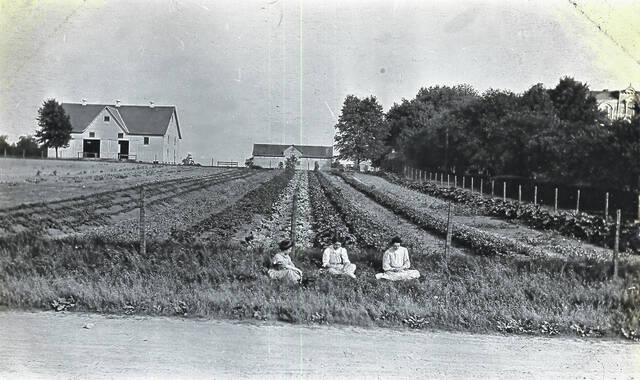
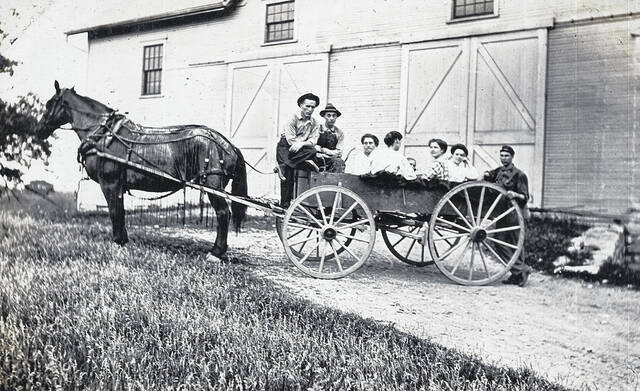
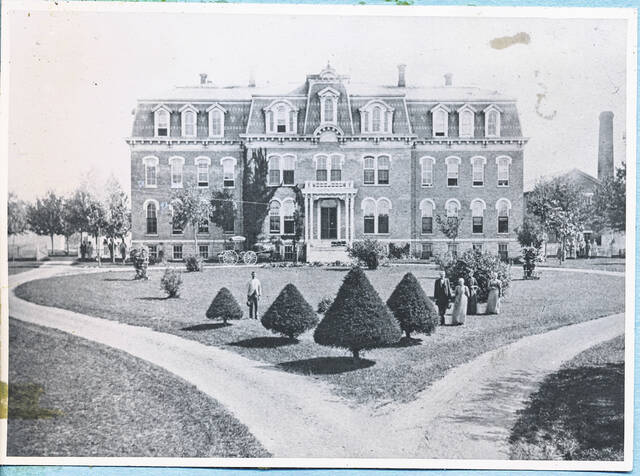
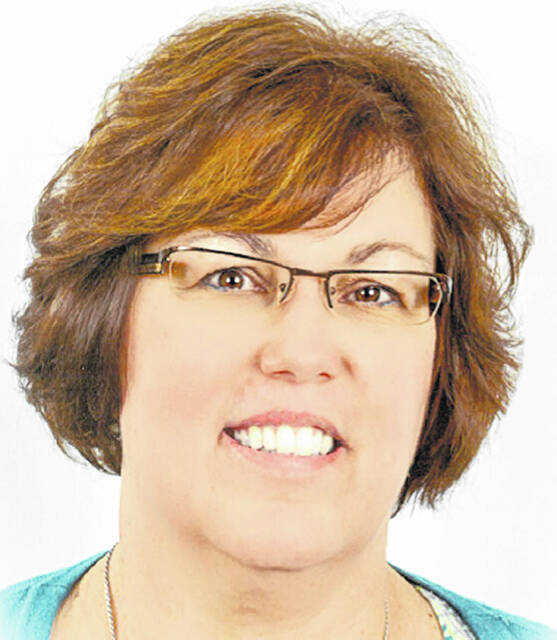
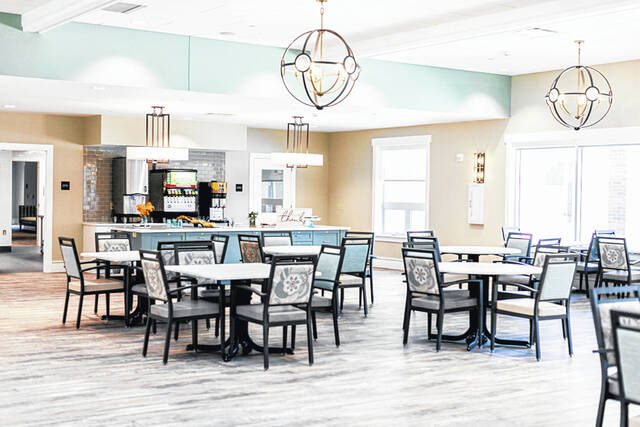
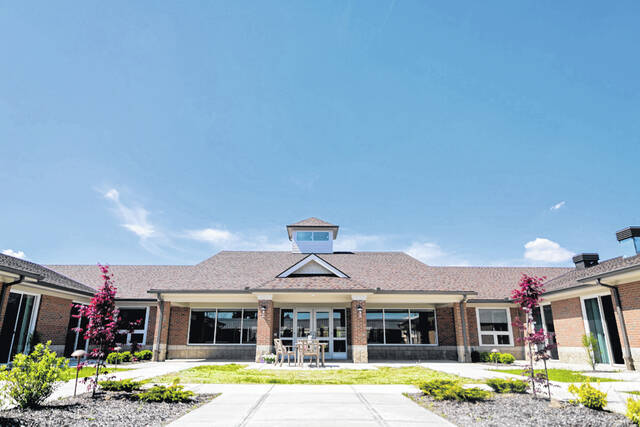
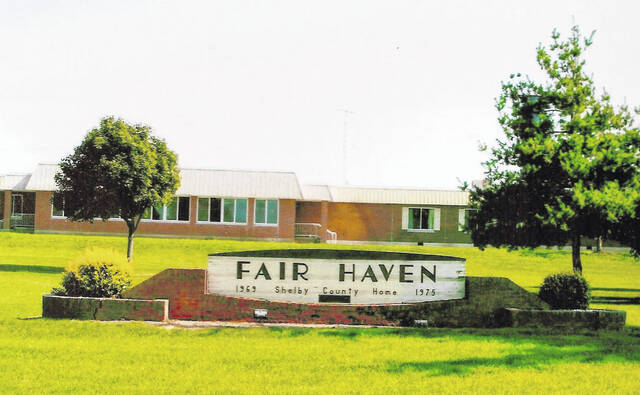
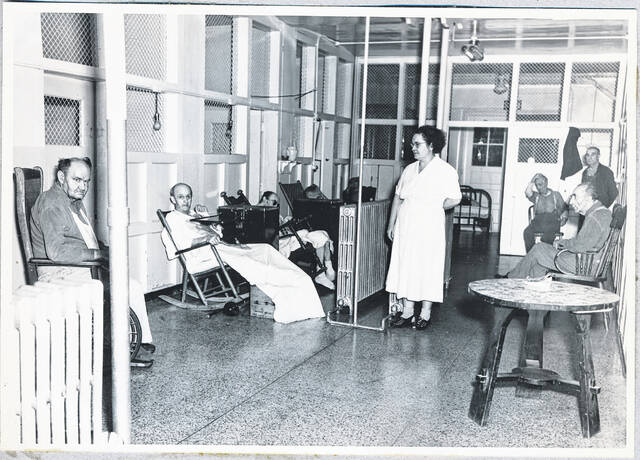
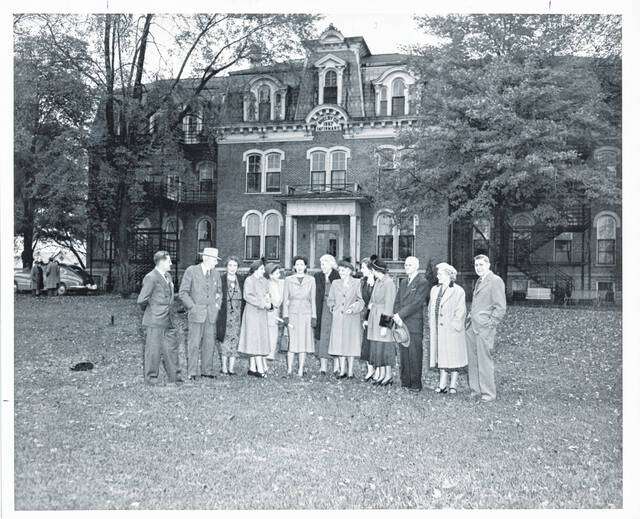
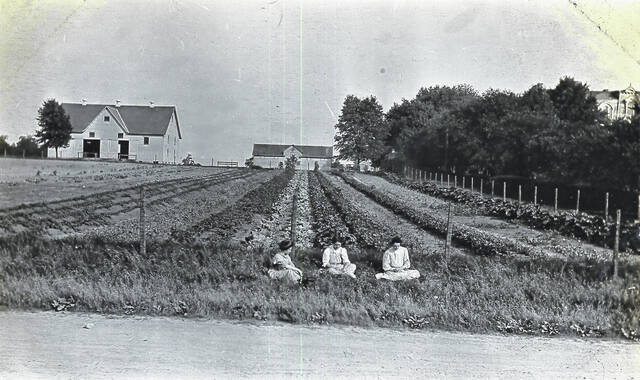
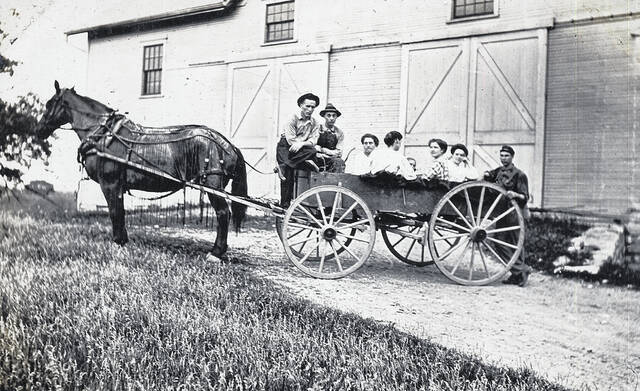
SIDNEY — After 30 years of service that began on June 3, 1991, Anita S. Miller, LNHA, is retiring as executive director of Fair Haven Shelby County Home as of Dec. 31, 2021. She was hired by the board of commissioners consisting of Bill Leighty, “Sonny” Meyer, and Tom Zimpfer.
The history of Fair Haven dates to the old County Home Infirmary site. On March 23, 1866, the property was purchased and a year later, in 1867, the Infirmary building was completed. The site was a working farm that residents operated. Over the years, however, the conditions of the Infirmary declined. An article in the Sidney Daily News described its condition as having “dark, dank corridors, ill-lighted stairways; flaky and crumbling plaster; deplorable bathrooms; kitchens; hospital cells; cracked floors, uncomfortable looking beds and chairs … and a peculiar and offending atmosphere which radiates from inadequate sewage disposal.” So, between Oct. 1944 and Oct. 1945, a committee of City Federation members and county officials undertook a year-long renovation of the Infirmary, which carried it through for roughly another quarter century, when Superintendent “Chuck” and Mary Nell Shaffer began their stewardship of this non-certified senior home.
In 1961, the Shaffers would eventually demolish the once-regal looking Infirmary building, so that on March 23, 1969, the red carpet was rolled out at 2901 Fair Road in Sidney for the grand opening of a new construction called “Fair Haven.” The Shaffers continued working in the new facility until 1979 when Bill Stine took over. Under Stine’s licensed administratorship, from 1979 to 1991, the facility was certified and accepted into the Medicaid program. It was not until Miller took over, however, that Fair Haven obtained its Medicare certification following its re-classification as a skilled nursing facility in March 2001.
Miller’s education and work experiences prepared her to step into the role that would occupy most of her career in county home administration, which, when combined, lasted more than 37 years.
As an undergraduate student, Miller studied at Miami University’s Middletown and Oxford campuses. However, she did not finish her degree there and instead transferred to Bowling Green State University (BGSU) to pursue a career in physical therapy. While a student at BGSU, she also worked as a therapy aide at Wood Haven (Wood County). It was working there that Miller decided to change her major to gerontology and a minor in business.
From 1983 to 1984, Miller left her therapy aid position to complete an overseas internship in England that helped to widen her worldview and solidify her life’s new direction and purpose.
She lived in the suburban neighborhood of Harold Wood next to the nursing home. As needed, Miller made a 20-minute train commute to Newham Station headquarters, located about 15 miles east of Charring Cross, in the London Borough of Havering. At that time, the less affluent and highly populous — and noticeably more diverse borough of Newham in East London — had six different nursing homes but lacked a systematic path to train and certify its nursing assistants. Miller’s mission during her year-long internship, then, was to aid the Newham London Borough Council in the formalization of their nursing assisting training program. Several training modules were created and successfully implemented throughout the entire organization.
Following her return to the U.S., just prior to her graduation from BGSU in 1984, Miller began a second internship for nine months at the Lutheran Orphans and Old Folks Home Society of Toledo, Ohio (which changed its name to the Lutheran Home Society, and then again, in 2016, to The Genacross Lutheran Services–Toledo Campus). While still living in Bowling Green, Miller regularly commuted to both Toledo as well as to Napoleon, where they were building a new care home. With her hard hat on, Miller helped oversee its construction by participating in construction consultations and meetings.
While performing this work, she was recommended and hired to provide short-term leadership coverage for roughly 45 residents at Henry County Home, a non-certified county facility located in Napoleon, Ohio.
Then, on Feb. 14, 1985, Miller first became a Licensed Nursing Home Administrator (LNHA).
The importance of Miller’s two internship experiences that helped launch her career left a lasting impression upon her. She would later go on to supervise six intern administrators in training (AITs) who also would, like her, go on to become LNHAs.
Miller’s next position at Putnam Acres Care Center in Ottawa, Ohio, would be her first full-time, regular job as an LNHA at a Medicaid- and Medicare-certified skilled nursing facility, and the experience Miller would gain there from 1985 to 1991 taught her valuable lessons that she would later bring to Fair Haven.
“When I arrived at Putnam Acres it was a well-oiled machine, with strong leadership. I knew I had big shoes to fill. Because I was only 24 years old, staff members who had been there a long time were not always receptive to my goals and ideas for the facility. I did a lot of explaining and also a lot of team-building and trust-building. We got over the ‘trust bridge’ eventually, once they realized that even though I was young, I was genuine and sincere about caring for the residents,” said Miller.
With five years of experience under her belt at Putnam Acres, Miller explained she was looking for a professional opportunity to generate upward mobility in her career. The move to Shelby County would represent a leap into greater responsibility with a larger facility — from 88-beds to 145-beds — as well as provide a cutting-edge service to the community: an adult day service program.
“When I came on board in 1991, an adult day program was very unusual,” said Miller. “County Homes, in general, were the forerunners for establishing them in the state of Ohio.”
A nearby adult day program in Ohio, called the ‘Today Center for Adults,’ opened in April 1975 in Xenia as part of Greene County’s ‘county home,’ at the Green County Infirmary, which, like the Shelby County Infirmary, was later demolished and replaced with what today stands as Greenwood Manor. Newspaper articles located in the Greene County Records Center & Archives from The Journal Herald and the Xenia Daily Gazette describe both the home-based and transportation services it offered.
In 1980, the Health Care Financing Administration (HCFA) published its national Directory of Adult Day Care Centers, listing a just 300 adult day programs in the country and a mere 28, including The Today Center for Adults and SUNRISE, which started in June 1980 in Sidney, are listed in the state of Ohio.
According to the Directory, the oldest adult day program in Ohio, which started in 1950, is the Montefiore Home Adult Day Care Program in Cleveland Heights for persons over age 65.
‘County homes,’ which provide services to low-income seniors, like those in Green and Shelby counties were indeed forerunners to Ohio’s Medicaid-sponsored adult day program that exists today, known as PASSPORT.
On Aug. 16, 1983, the Shelby County Senior Day Care Corporation became a licensed business in the State of Ohio, having originated under the directorship of Charmane L. Fogt.
The following year, Ohio’s PASSPORT program, which offers adult day programs and other services to income-eligible seniors in Ohio, began their day program pilot study in association with Catholic Social Services.
Elaine Schweller-Snyder, marketing/development coordinator in the Northern Counties Office for Catholic Social Services of the Miami Valley wrote in an email that in 1984 “the pilot program was conducted in two models – urban and rural. Catholic Social Services of the Miami Valley (CSSMV) submitted a proposal to do the rural pilot in Shelby, Miami, Darke, Logan, Champaign, and Preble Counties. The urban pilot was done by the Area Agency on Aging in Columbus.”
Then, on March 9, 1985, the Corporation’s day program was transferred to Fair Haven’s but remained under Fogt’s directorship. Not long after, however, on Sept. 3, 1985, the Corporation was dissolved and the day program continued under Fair Haven’s umbrella of operations.
Meanwhile, Ohio’s PASSPORT program did not roll out state-wide until five years later in 1990.
Miller’s motivations for her move to Sidney were not purely professional, but also personal.
“One of the appeals of Shelby County was its people. They’re wholesome, good-hearted people,” she said. “Dick Meeker, who served as Commissioner in the 1990s, was a solid, progressive thinker, and he was very influential and positive about Fair Haven’s success and growth,” Miller said. “I’ve also been blessed with a lot of leadership team members and department heads over the years, and we’ve had a lot of long-term staff who do an excellent job.”
At Fair Haven, during the the fiftieth anniversary year, on Aug. 12, 2019, a ribbon cutting was held celebrating a completed expansion which Miller spearheaded. During the second construction project of her career, Miller reflected on all the changes since 1984.
“Long-term care has come a very long way,” said Miller. “When we were making plans for the Fair Haven addition, we were planning private rooms and private baths, but back in 1984, the rooms were semi-private and four people shared one bathroom.”
During her years at Fair Haven, Miller says her greatest challenges were also her greatest accomplishments. “When I felt the most pressure and stress, when that was over, I felt the most positive,” she said.
The first major challenge for her was moving Fair Haven from a Medicaid-only to a skilled nursing facility (SNIFF) and providing all the documentation and data that the Ohio Department of Health (ODH) required back in 2001.
The second major hurdle was preparing a certificate of need to the ODH that a new $13 million addition in 2019 was feasible.
“It was in the works back in 2013 or earlier, and when it was finally completed, I was a little numb,” said Miller.
The addition was part of Miller’s initiative to address and fix a number of reported deficiencies from 2018 onward to remain Medicare-compliant, all of which were reported as corrected by March 31, 2021.
The final major challenge Miller faced during her career, and certainly the greatest, was COVID-19. Like many long-term care facilities, Fair Haven was greatly affected by the SARS-COV-2 virus. Despite the individual rooms, as of October 20, 2021, the assisted living facility reported a total of 73 resident cases and 70 staff cases of COVID-19 infections to the Ohio Department of Health since the pandemic began in Ohio around Jan. 2020.
As an administrator, Miller explained, the biggest challenges with COVID were getting all the information out to stakeholders and keeping up-to-date with all the changes that state and federal requirements placed on nursing homes.
Today Fair Haven (fairhavenservices.com) is a 116,205 square foot government-owned facility that offers adult day services, nutritional and medical services, home health care, Alzheimer’s care, and physical therapy. While there are a total of 125 certified beds available, Fair Haven offers a great deal of privacy and focuses on keeping married couples together as they age, so in their new construction private there four companion suites and 66 private suites, and 51 private rooms in the older portion of the building.
Due to the recent challenges of COVID creating staffing shortages, the facility is looking to fill more positions to improve its services, including dietary, environmental services and nursing professionals.










